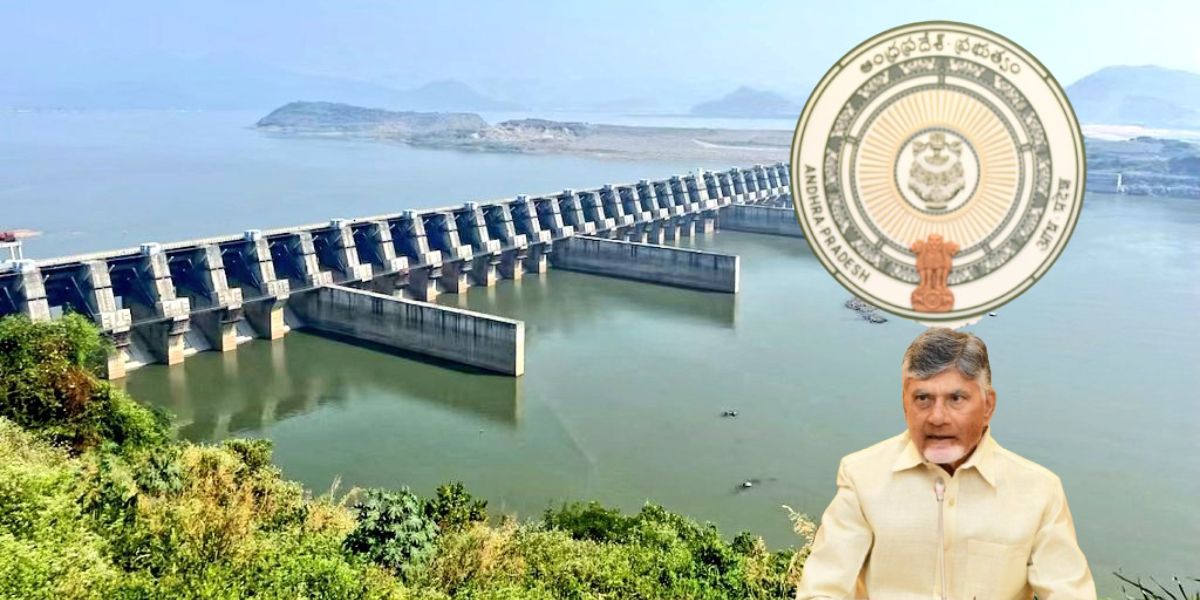Even as Telangana is marshalling all its resources to oppose the project, an intrepid Andhra Pradesh Chief Minister N Chandrababu Naidu is going ahead with the ₹80,112 crore project.
Published Apr 24, 2025 | 8:00 PM ⚊ Updated Apr 24, 2025 | 8:00 PM

Andhra Pradesh government expects to complete the Banakacherla project by 2027.
Synopsis: Andhra Pradesh Chief Minister N Chandrababu Naidu is going ahead with the Banakacherla reservoir project even as Telangana expressed fears that it will create problems aplenty for its people. Naidu is of the opinion that Andhra Pradesh could go ahead with the project, as he believes Telangana’s fears are unfounded.
The ambitious Godavari-Penna river-linking project — Polavaram-Banakacherla reservoir — might turn the arid lands of the Rayalaseema region in Andhra Pradesh into verdant stretches of prosperity. However, its sibling state of Telangana fears that it will create problems aplenty for its people.
Even as Telangana is marshalling all its resources to oppose the project, an intrepid Andhra Pradesh Chief Minister N Chandrababu Naidu is going ahead with the ₹80,112 crore project despite the state’s coffers hitting rock bottom with a mounting pile of ₹6.4 lakh crore debt weighing it down.
After forming a Special Purpose Vehicle (SPV), Jala Harathi Corporation, for the construction of the Banakacherla reservoir on 8 April, he met Union Jal Shakti Minister CR Patil in Delhi on 22 April, seeking his support for the initiative that would transform the perennially water-thirsty Rayalaseema into a land of milk and honey.
The Andhra Pradesh Cabinet approved its establishment to manage the river-linking project, of which Naidu is the chairman.
If Polavaram is Naidu’s priority among irrigation projects, Banakacherla has come as second, as he believes it would accelerate the development of the Rayalaseema region. He is keen that it should take proper shape by the time the next elections arrive. Even though he set a deadline of 2027, it might take longer, given the uphill task of raising finances and obtaining clearances.
Banakacherla is designed to transfer 200 thousand million cubic feet (tmcft) of Godavari floodwater from Polavaram to the Bollapalli reservoir and from there to the Banakacherla regulator in Nandyal district. The project thus links the rivers Godavari, Krishna, and Penna.
The project is also expected to meet the drinking water requirements of 80 lakh people, provide irrigation facilities for three lakh hectares of land, and stability for 9.14 lakh hectares more, while allocating 20 tmcft of water to industries. As it elevates Rayalaseema to the fertile lands of the Godavari districts, he believes it would be an economic game-changer.
Addressing a party meeting recently in Mangalagiri, he wondered why the state shouldn’t harness the water that would otherwise vanish into the sea, serving no purpose. “Nearly 1,000 tmcft of water flows waste into the Bay of Bengal. Why allow it?” he had asked. “This is all about progress, not politics,” he had said.
As Naidu’s dream of interlinking Godavari with Penna began taking shape, the sibling state of Telangana is worried.
The writing on the wall — that it might portend a threat to Telangana — appeared clear to Chief Minister A Revanth Reddy and Irrigation Minister N Uttam Kumar Reddy, who began building a watertight argument to oppose the project.
They said the project violated the 1980 Godavari Water Disputes Tribunal Award and the Andhra Pradesh Reorganisation Act, 2014.
Telangana’s Irrigation Department had written to the Godavari River Management Board (GRMB), demanding an immediate halt to the project, as it has no approvals from the Central Water Commission (CWC), GRMB, Krishna River Management Board (KRMB), or the Apex Council.
They were also worried about the possible inundation of Bhadrachalam, for which Godavari is a cause of sorrow during floods. They also expect a reduction in water availability for their projects, including Sitarama and Sammakka Sagar.
The state had already decided to move the Supreme Court, along with opposing the Rayalaseema Lift Irrigation Scheme—another project Telangana believes would deny its legitimate share of Krishna waters.
In his earlier meeting with CR Patil on 20 February this year, Naidu explained the project’s potential to transform Rayalaseema. He had said, “Banakacherla is about using surplus water efficiently. We’re not taking from Telangana’s share. We are only saving what is being lost to the Bay of Bengal.” He sought Patil’s intervention for clearances and funds. Naidu echoed this in Delhi, telling Patil, “We’re following due process.”
Naidu is of the opinion that Andhra Pradesh could go ahead with the project, as he believes Telangana’s fears are unfounded. He had questioned why Telangana was objecting to Banakacherla when Andhra Pradesh had not objected to Kaleshwaram.
He tried to get the Union minister interested in the project by explaining how the Godavari-Penna Project is in synchrony with the national river-linking ambitions of Prime Minister Narendra Modi and former prime minister Atal Bihari Vajpayee. Naidu also explained the purpose of Jala Harathi to fast-track the project.
Naidu had already broached the broad contours of the project to Finance Minister Nirmala Sitharaman to secure funding. He sought the Union government’s support to treat it as a national priority.
Naidu believes Telangana’s objections were more political than practical. At the GRMB’s heated meeting on 7 April 2025 in Hyderabad, Telangana had accused Andhra Pradesh of hiding project details and going ahead without approvals. Andhra Pradesh disputed the claim, stating that the Detailed Project Report (DPR) was still in progress.
Naidu had said in the past that Telangana should not harbour fears. Being at the tail end of the Godavari, Andhra Pradesh is trying to secure water that would otherwise goto waste into the sea. He said politics is about serving people, and Banakacherla should symbolise the achievement of the Telugu people of both states — not just that of Andhra Pradesh.
(Edited by Muhammed Fazil.)
